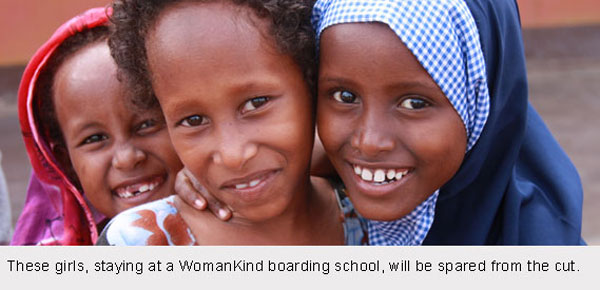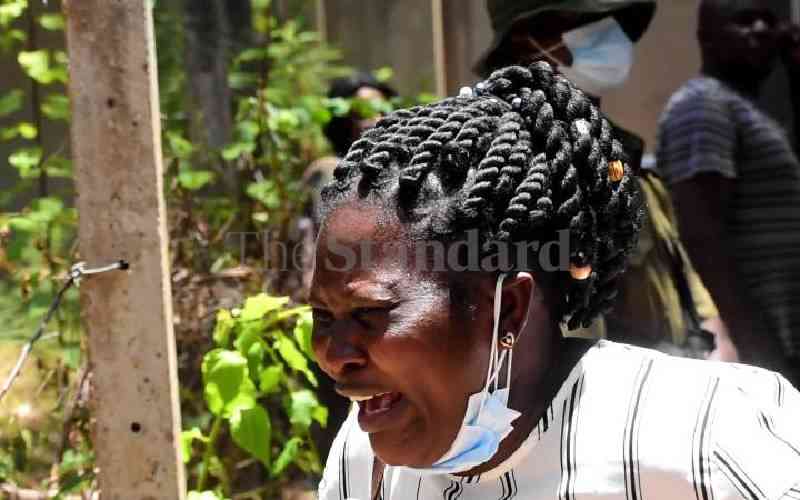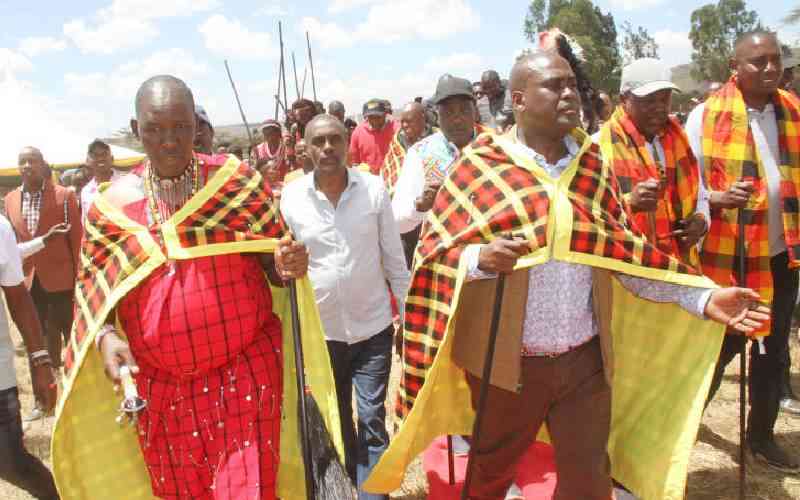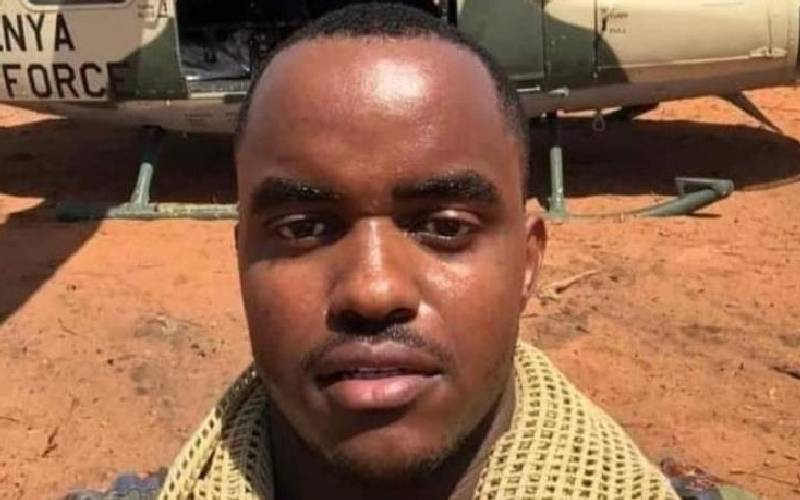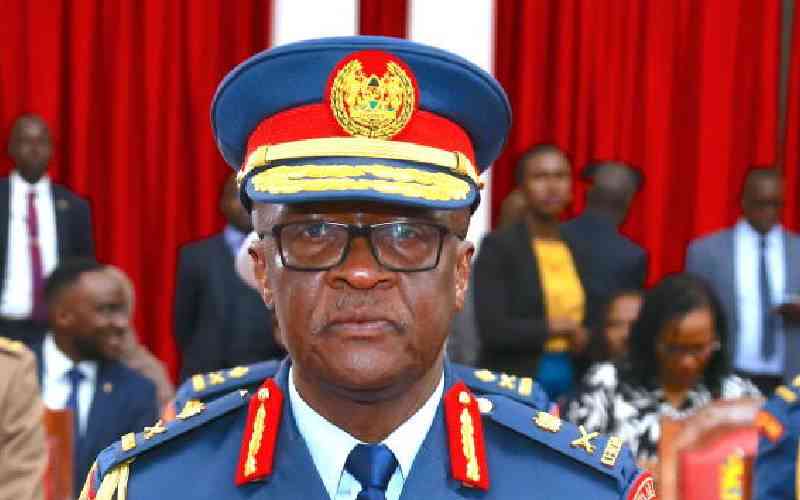Connsider this: Nashiru, a practitioner of female genital mutilation (FGM) in a Maasai community in Kenya, says, "Cutting girls is something our people have done for hundreds of years. No one can convince us that it is wrong."
FGM refers to all procedures that involve the partial or total removal of the external female genitalia or other injury to the female genital organs for non-medical reasons. It is incredibly painful, traumatizes girls and results in numerous negative health consequences that last decades.
It can even cause death. It is also a form of violence against girls, exacerbating a vicious cycle of oppression and poverty that prevents them from fully participating in their country's long-term progress. Yet Nashiru's vehemence shows us just how entrenched this practice is.
Globally, it is estimated that over 140 million girls and women have undergone some form of FGM. Currently, more than three million girls, the majority under 15 years of age, undergo the procedure each year.
In Kenya, even in 2014, FGM is an all too painful reality for generations of women and girls. Although the Demographic Health Survey of Kenya shows that FGM among 15-49 year olds declined from 37.6 per cent in 1998 to 27.1 percent in 2008-2009, the figures are still too high and progress has been far too slow.
This can only be changed by uncompromising political will and leadership, backed up by robust legislation, law enforcement, judicial action and community mobilization aiming at changing the social norm that drive the practice at community level. The good news is that this is happening in Kenya.
Data shows that Kenya achieved an annual rate of reduction of 6.6 percent in the prevalence of FGM between 2005 and 2010. The United Nations Population Fund (UNFPA) and UNICEF joint program to end FGM, focuses on protecting girls and women by accelerating abandonment of FGM and providing care for its consequences has been operational in Kenya since 2008 to support national and grass root efforts.
The First Lady of Kenya has condemned the practice and said that it should not have any place in any community living in the 21st century. She said that "as a country we must aspire to achieve a zero FGM status where every girl can go to school, find and fulfill her destiny, enjoy her rights and contribute to nation building."
This spirit was reflected on 27 August 2014 at a conference organized by Kenya's Ministry of Health supported by UNFPA as well as key development partners like the World Bank, USAID, DFID, Kenya Red Cross, UNICEF and WHO to reduce maternal deaths in Kenya.
Fifteen county Governors of the 47 counties in Kenya (which account for 98 per cent of the country's maternal deaths, and where many communities practice FGM) signed a historic communiqué overseen by the Cabinet Secretary for Health and the UN Resident Coordinator to end maternal deaths and eliminate harmful traditional and cultural practices.
FGM has immediate and long-term effects on women's health. Some of the immediate effects include severe bleeding, infection and shock.
The long-term complications include recurrent urinary tract infections, keloids, difficulty during menstruation and pain during sex. FGM is also associated with the transmission of HIV from use of unhygienic instruments.
A study by WHO shows that FGM exposes women and babies to significant risks during childbirth. The complications can include need for a Caesarean section, severe haemorrhage and prolonged hospitalization -- where facilities exist.
In Kenya, for example, 57 percent of women deliver at home, making them especially vulnerable to these childbirth-related complications.
FGM is part of a vicious set of circumstances designed to keep women as underdogs. This begins with a culture where FGM is tolerated and extends to issues like child marriage, sexual assault and rape, lack of access to health care, lack of access to education, high maternal mortality and lack of economic opportunities.
Stay informed. Subscribe to our newsletter
Where women could be drivers and leaders in Kenya's economy, instead they are handicapped socially, culturally and economically.
Research into the practice shows that FGM is practiced by different ethnic and religious groups within the country in different ways.
FGM is far more prevalent among the Somali (98 percent), Kisii (96 percent) and Maasai (73 percent) communities. As a result, FGM is also geographically unevenly spread in Kenya; it is more visible in rural areas than urban areas.
It is important to note that FGM is against the law in Kenya. So what can the Kenyan government, law enforcement and civil society, including the media, do to put an end to FGM?
Firstly, the law must be enforced. The Prohibition of Female Genital Mutilation Act of 2011, act of Parliament, "prohibits the practice of female genital mutilation, to safeguard against violation of a person's mental or physical integrity through the practice of female genital mutilation and for connected purposes."
Secondly, the campaign against FGM must have a coherent national strategy for the abandonment of FGM. This will not only require political will, but mass social mobilization and changing social norms and mindsets will be key.
Girls empowerment to lead a grass root movement for their well-being should be an integral part of the response.
Thirdly, FGM must be considered more than a health issue. It is a grave violation of human rights, as much as sexual and physical violence against girls and women.
As the Executive Director of UNFPA, Dr Babatunde Osotimehin, said, "It is an affront to their human dignity, an assault on their health and an impediment to the well-being of their families, communities and countries.
Human development cannot be fully achieved as long as women and girls continue to suffer from this human rights violation or live in fear of it."
The 15 county Governors hold the key to ending the scourge of FGM, and they must lead the charge. They can serve as an example for the rest of the world and demonstrate that there is "no place in the 21st century for the harmful practice of FGM," a charge in which they can rely on the full support of UNFPA and all development partners.
Siddharth Chatterjee is the United Nations Population Fund (UNFPA) Representative to Kenya.
 The Standard Group Plc is a
multi-media organization with investments in media platforms spanning newspaper
print operations, television, radio broadcasting, digital and online services. The
Standard Group is recognized as a leading multi-media house in Kenya with a key
influence in matters of national and international interest.
The Standard Group Plc is a
multi-media organization with investments in media platforms spanning newspaper
print operations, television, radio broadcasting, digital and online services. The
Standard Group is recognized as a leading multi-media house in Kenya with a key
influence in matters of national and international interest.
 The Standard Group Plc is a
multi-media organization with investments in media platforms spanning newspaper
print operations, television, radio broadcasting, digital and online services. The
Standard Group is recognized as a leading multi-media house in Kenya with a key
influence in matters of national and international interest.
The Standard Group Plc is a
multi-media organization with investments in media platforms spanning newspaper
print operations, television, radio broadcasting, digital and online services. The
Standard Group is recognized as a leading multi-media house in Kenya with a key
influence in matters of national and international interest.

